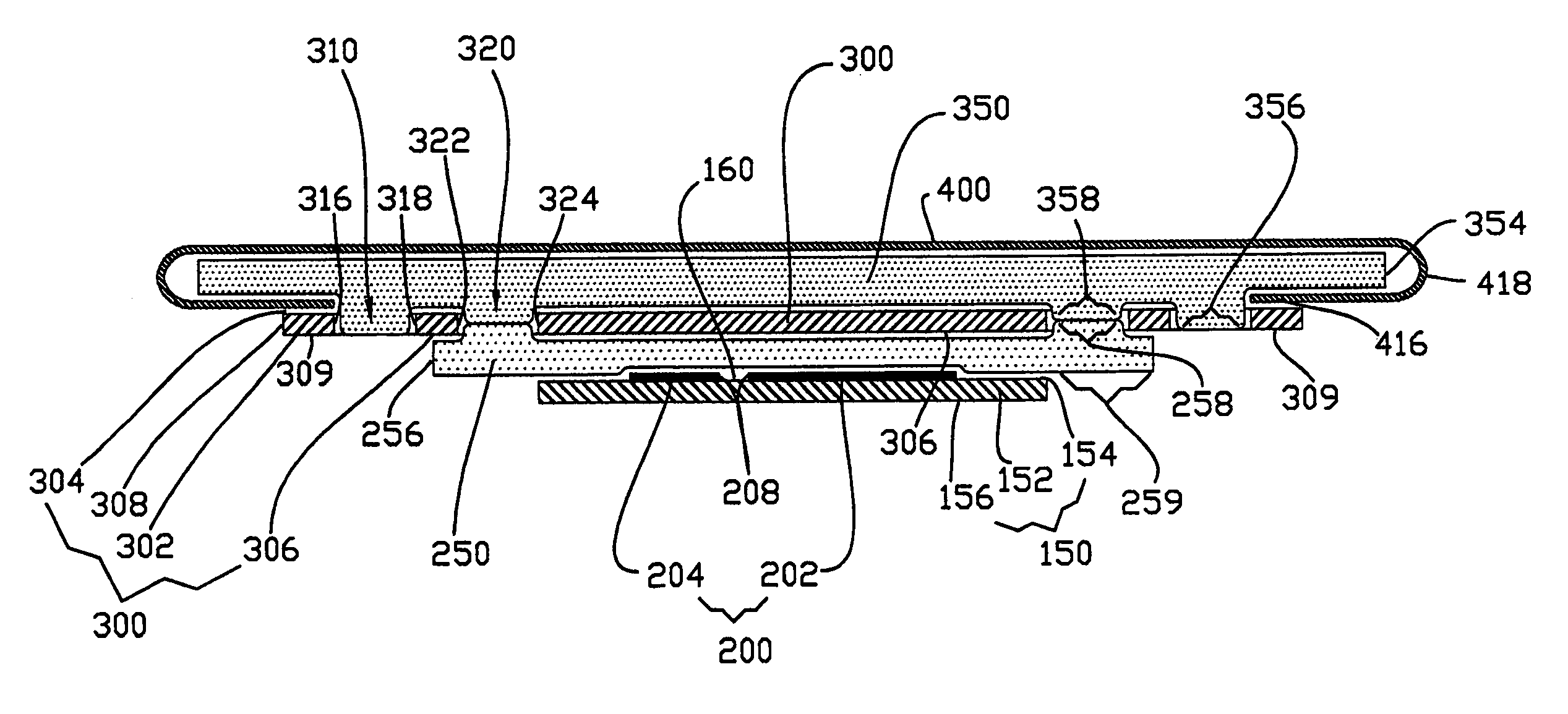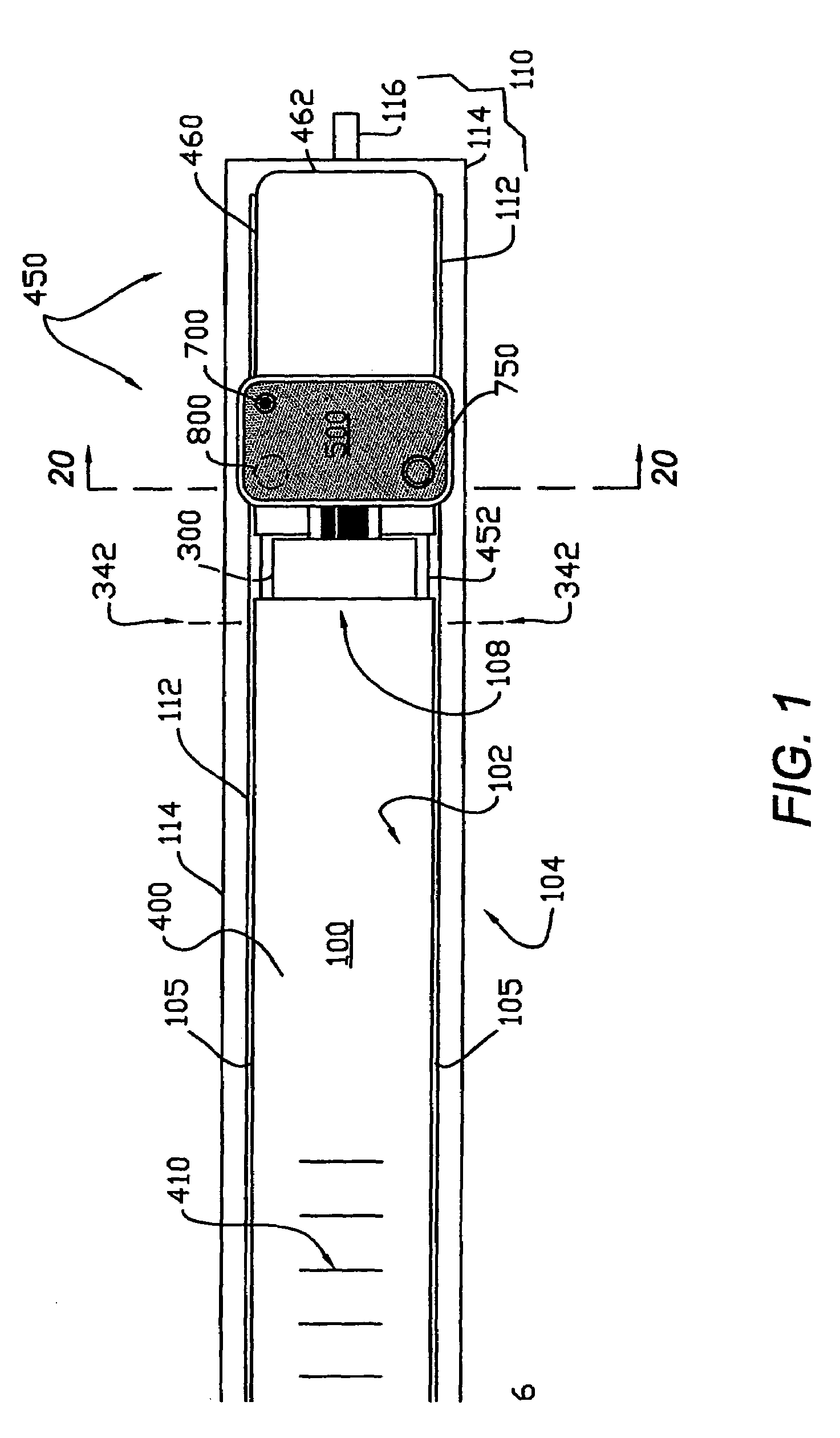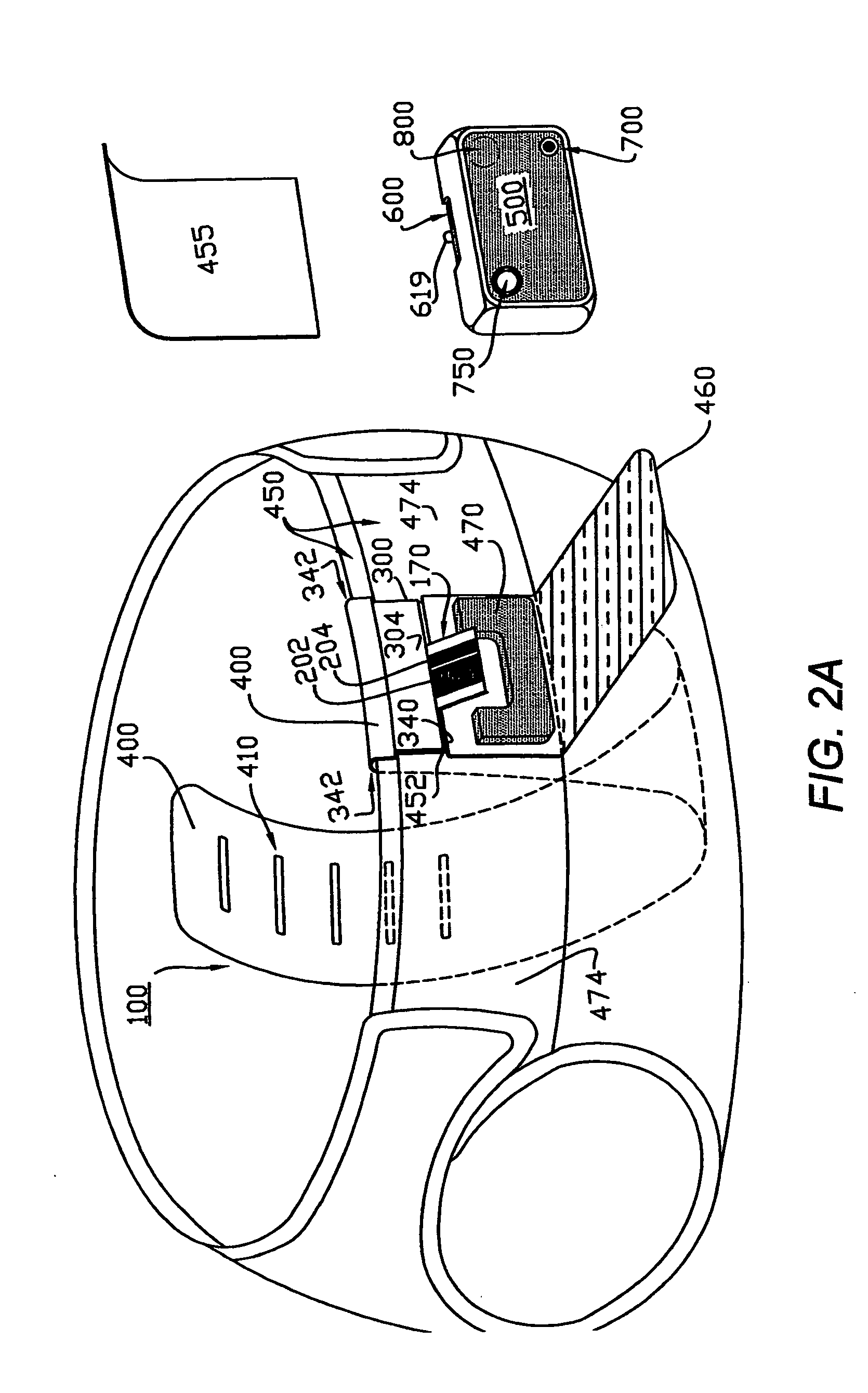Each has, for one reason or another, apparently failed to achieve significant implementation and
consumer acceptance.
Upon review, the prior systems appear either impractical, unsuitable to the use environment, unworkable and / or uneconomical—largely for one or more of the following reasons: failure to provide an appropriate sensor response or alarm criteria with respect to urine-soiling; inability to detect fecal matter, or to provide an appropriate sensor response or alarm criteria with respect to
feces-soiling; lack of important user-oriented features; and unsuitability to cost-effective manufacturing.
However, this focus on the detection of simple “wetness”
resultant from
urination—as opposed to the far more useful determination that an elimination-absorber actually required changing (or at least inspection)—failed to answer the real needs of caregivers and diaper-wearers.
While this simple “wetness detection” focus may have appeared somewhat workable, as applied to certain cloth or early low-absorbency diapers, it did not adequately address the effects of widely differing flow-rates and volumes in various
urination events and situations.
Moreover, for reasons that shall be explained below, this approach was completely incompatible with the properties (and particularly the much greater capacity) of modern disposable diapers.
Thus, previous systems based on simple “wetness detection” typically either failed to work consistently, or were prone to meaningless or premature alarm indications.
If urine is detected only after soaking to the bottom of a diaper, the continued accumulation will tend to quickly spread along the inside of the cover, and quite likely leak out before the diaper can be changed.
Thus, the determination of a fully saturated condition based on the sudden presence of urine at the bottom
layers is not practically useful.
Even completely non-electronic approaches to diaper monitoring, such as the “happy face” visual indicators incorporated into the outer cover of Fitti™ brand diapers, can similarly suffer from the limitations of over-simplified alarm criteria and inappropriate, inconsistent, or untimely sensor response.
Also, such purely visual wetness-indicating devices, which are necessarily disposed directly on a diaper cover, have limited value for other reasons.
Just as with traditional methods, they still require frequent and continual checking by a caregiver—and the awkward removal of clothing
layers worn over a diaper—to permit viewing of the indicator.
They thereby fail to provide a convenient, automatic, attention-getting
signal that a diaper needs changing.
Still other inventors tried to “intercept” the flow of urine somewhere in the mid-
layers of a diaper, but as will be appreciated by those skilled in the art, another problem results from the modern
disposable diaper being such an aggressive absorber.
This means that the distribution of liquid through the diaper is highly non-uniform and it changes markedly after a
urination event, as the super-absorber core gradually pulls liquid out of the conventional absorbent bulk.
Also, with intermediate levels of
moisture in any type of diaper (where the
absorbent material is not yet completely saturated), urine can accumulate gradually or unevenly—often separated into discontinuous droplets or unpredictably scattered wet or merely damp regions.
Moreover, the mere presence of relatively
high conductivity (and hence the presence of liquid) along any given path through a diaper may not reflect a true “needs to be changed” condition (i.e., correlate with caregiver expectations or with traditional diaper inspection methods), particularly in the case of modern high-absorbency, disposable diapers.
As explained above, none of the foregoing simple
conductivity-based systems reflected a truly appropriate sensor response or “alarm criteria” with respect to urine-soiling of diapers.
Furthermore, selecting an appropriate fixed threshold value (that would remain valid with different sizes and applications of diapers) may not be possible.
Thus, making sufficiently accurate and meaningful measurements (under all expected conditions) presented serious and unanswered practicality problems.
These problems result from variations in measurable
conductivity or
capacitance due to many factors such as
high humidity,
perspiration, residual dampness from the washing of soiled
skin, and the relative movement and random compression of the absorber as the wearer shifts position—all of which are likely to be experienced in the use environment.
However, the described relatively high-impedance
capacitor input to a monitor circuit would likely be particularly prone to external electrical
noise and interference, as well as to significant
capacitance variations due to unpredictable
moisture distribution, the presence of other nearby conductive surfaces and physical movement—as the diaper wearer actively and continually shifts position.
In short, all the previously described difficulties associated with other distributed dampness measurement approaches would tend to be worsened with the sensing elements moved farther away from the measurement volume.
In addition, the use of continuous sinusoidal AC signals for sensing also typically entails greater
energy consumption than does the use of DC conductivity methods.
In prior systems this has required either the recharging or replacement of batteries, and thus complicated or precluded the use of a permanently sealed
monitor unit.
Moreover, the prior systems were all ineffective for detecting the
feces-soiling of diapers.
This has rendered it typically undetectable by prior methods relative to much larger background changes produced by many of the above-described factors in the use environment.
In general, the prior devices' collective inability to reliably detect
feces stems from both the physical nature of the sensors and the
electronic systems employed with them.
DC systems for accurately measuring liquid
ionic conductivity typically require some “latching” means (such as circuits which detect an initial event and then remain “triggered”), because the applied
electric field used for measurement causes dissociation of the very ions that enable
electrical conduction, thus decreasing the measured conductivity over time.
This effect poses only a minor problem when liquid urine directly bridges two closely spaced contacts, because the sudden initial increase in conductivity is substantial (due to the relatively high
uric acid ionic concentration in urine) and this sudden increase can be easily differentiated from the baseline “dry diaper” condition.
However, neither proportional bulk
moisture content distributed in a diaper, nor the presence of feces, are suitable for direct DC-conductivity measurement.
If a steady-state
voltage is applied in an attempt to detect feces by inducing a
DC current, the ionic dissociation effect results in rapid reduction in measured conductivity.
This approach does not work at all with feces, however, because the initial conductivity is so low—and the decrease is so rapid—that after mere seconds, the conductivity falls below a practically measurable level.
If a “latching” electronic
detector is used to circumvent this problem—and is made sufficiently sensitive for detection of feces—this type of circuit may be easily triggered by momentary and insignificant conditions.
Because the true state of the diaper could not, in such cases, be reliably determined (without reverting to traditional diaper inspection), latching-type detectors are undesirable for use in elimination-absorber monitoring systems.
An additional problem is presented by the appropriate alarm criteria for feces-soiling.
Obviously, for feces detection purposes, the various prior AC bulk-dampness type of sensors were not useful, as their sensing elements focused on a bulk volume of a diaper, not on its surface.
On the other hand, a sensor structure involving exposed electrodes placed on the top surface of a diaper, while not only disconcerting to a caregiver, would prematurely respond to the presence of any urine.
Such arrangement would also greatly increase the likelihood of false alarms resulting from bridging of the electrodes through either AC-
coupling, or direct contact with
skin, particularly if damp.
As discussed above, feces are relatively very low in conductivity, and are thus difficult for such a
system to reliably detect in the use environment.
The overall elimination-absorber feces-detection problem is even more difficult, because a truly practical system must effectively combine the determination of both feces and urine-soiling of diapers.
Clearly, no prior system has successfully done so.
The absence of any widely marketed
consumer product for elimination-absorber monitoring further highlights the unsuitability of prior inventors' attempts.
 Login to View More
Login to View More  Login to View More
Login to View More 


